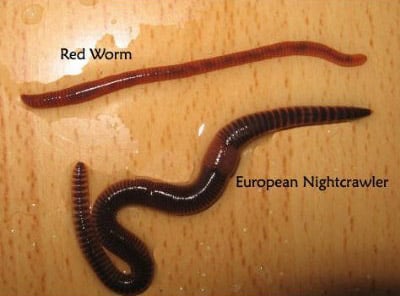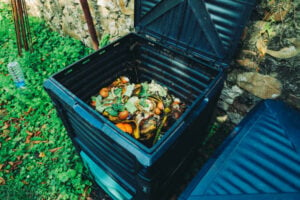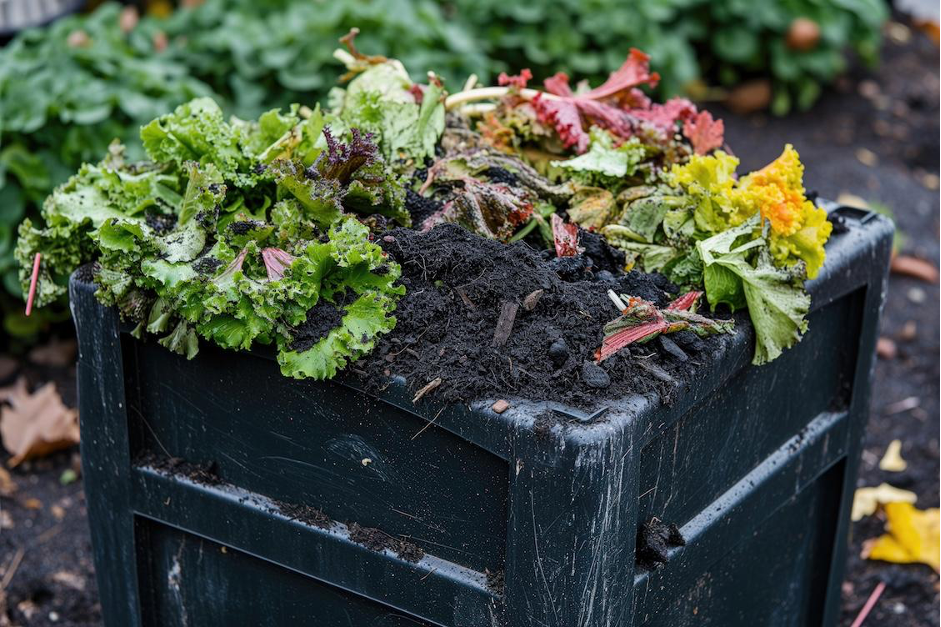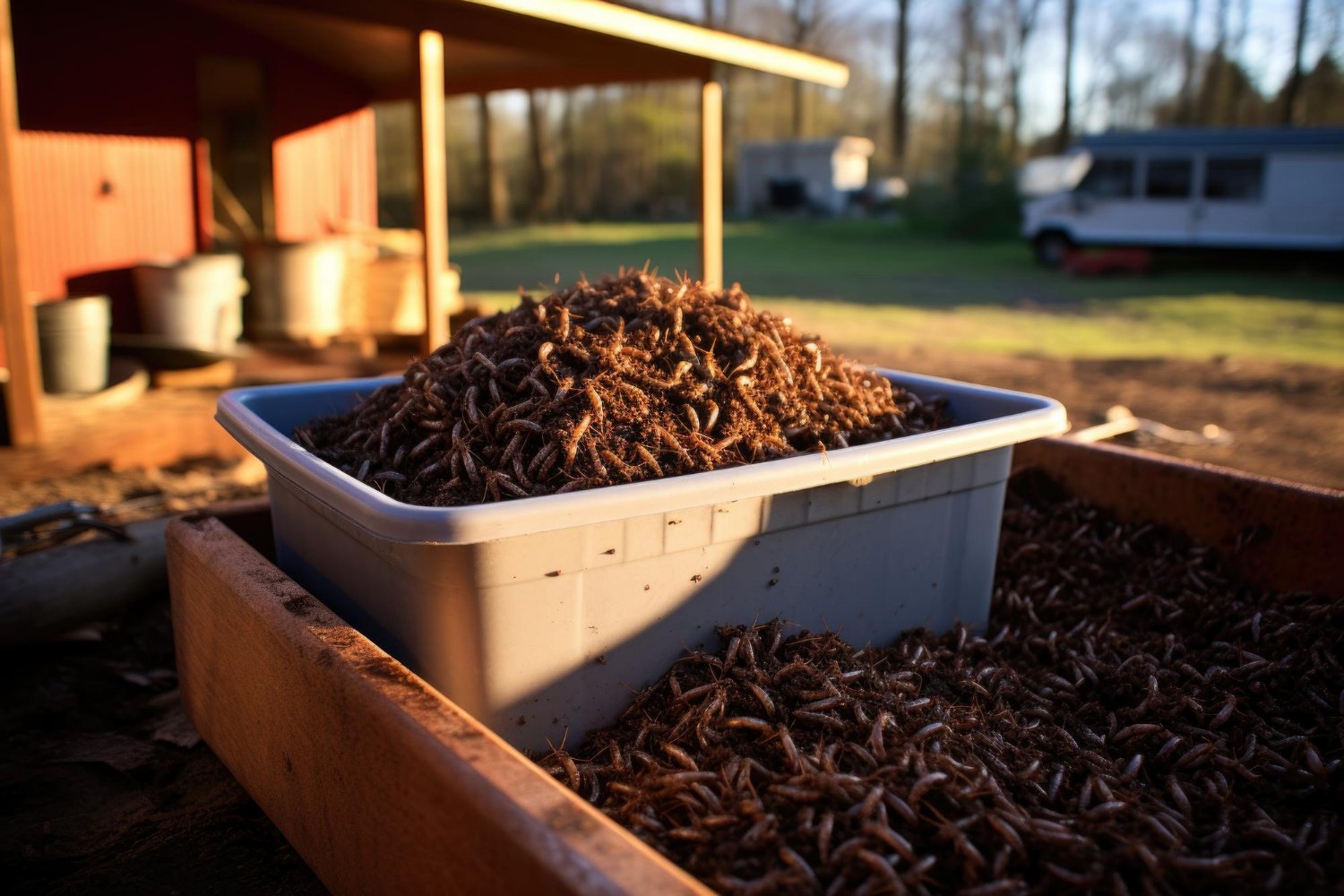
Worm Composting – The Basics
What is vermicomposting? “Vermi-” means “relating to worms.” Therefore, vermicomposting means creating compost by using worms. It’s the art of feeding worms your food scraps. The worms turn your food waste into nutrient-rich organic fertilizer, also known as humus, worm castings, worm manure, or worm feces – perfect for gardens, lawns, and potted plants.
It may seem like a daunting task, but it’s actually quite simple. All you need are worm bins, some organic waste, bedding materials, worms, and the right attitude to take care of these little creatures.
This article addresses several basic materials you will need and where to get the worms, the pros and cons of vermicomposting as well as common mistakes beginners make and how to avoid them! Uncle Jim’s Worm Farm has all the knowledge you will need to succeed at vermicomposting.
Composting Bins
Your worms are going to need a place to call home that’s why the first thing you will need to start vermicomposting is a worm bin. Not all worm bins are created equal. Some materials, like plastic and wood, are better suited to house a worm population.
It’s important to note that they cannot have any antimicrobial properties; since bacteria and other beneficial microbes are needed for the composting process to happen. You can purchase commercial bins or build your own bin.
Whichever you decide to go for, these are the attributes a good worm bin should have:
- A lid to keep out the rain and discourage predators
- Drainage holes at the bottom
- Numerous holes on the sides
- Room to fit enough bedding so all the worms can move around
- Empty space above the bedding for air and let the bedding/fertilizer mix grow
Types of Bins
The Traditional One (Plastic Bins)
This type does not require a specific bin, but rather any plastic bin that can hold more than 3 gallons.
Buckets, tubs, trash cans, and other similar items are commonly used in households or by those who do not want to spend a lot of money when starting their vermicomposting journey. All you have to do is to poke holes through the plastic bins to aerate and allow the worms their oxygen.
Stacked Trays
One of the best options is trays, which are simple to maintain and harvest. They won’t get too heavy, so if they need to be moved, they’ll be simple to lift. If you want to have an indoor vermicomposting system, stacked bins are a popular choice. They were built to save space by literally stacking bins with holes in the bottoms to allow the worms to migrate up and leave castings and bedding behind, easier than traditional choices.
Moisture retention is excellent because the trays are nestled on top of one another and are sealed with a tight-fitting lid. The system’s base usually has a drain or spigot that allows for easy liquid drainage and collection of worm tea.
Check out Uncle Jim’s Worm Farm’s selections of tray-based composting bins. Each comes with instructions, and some include the worms.
Flow-Through Bin System
Because some worms prefer to live near the surface, the flow-through worm bin was developed to address some of the shortcomings and issues associated with traditional worm bins. This method adds organic materials and worms to the top of the bin while collecting worm casting (poop) from the bottom.
To keep everything from falling out, there are bars or wires in the middle. Because they are quite messy, flow-through bins are more commonly used for outdoor compost bins.
Bedding Materials
Worm bin bedding is what your worms live in. It must simulate the worms’ natural habitat so they can thrive. After setting up the worm bin, bedding is added before worms can be set free. You can use shredded brown cardboard, pure peat moss, or coconut coir; using just one type is fine, but worms prefer a variety of bedding types.
The key ingredients to good bedding are:
pH Neutrality
A properly maintained worm bin should have a pH of 6.0 to 7.0, which is ideal for many types of composting worms. A hydrometer, which can be purchased at any hardware store, can be used to measure the pH in your worm bin.
A poorly managed worm bin pH can be fatal to your worms. Minor pH issues can cause sour odors from your worm bin, similar to vinegar, and ruin any worm compost already made.
If you notice your worm population crawling up and out of your worm bin for no obvious reason, the conditions in your worm composting bin could be problematic.
Moisture Retention
Worm bedding needs to be moist enough to let the worms breathe. Dry bedding will only suffocate the worms and decrease their population.
Excess moisture can make the worm bin smell and have the consistency of mud. Ideally, the bedding should be 80% moist, wet enough to the touch; but when you squeeze it, no water should come out. We recommend looking for a consistency of a wrung out sponge!
Oxygen Aeration
Oxygen diffuses from the air through the skin. Worms do not have lungs. As long as they have access to enough air and moist skin, they will breathe easily.
When worms eat, they tunnel through organic materials and soil. These tunnels help create air holes which then lead to a healthier vermicompost bin.
Most Common Worm Bedding Materials
The key to keeping your worm bin healthy is to use a variety of bedding materials and add them to your worm bin on a regular basis. Vermicomposters should replenish their worm bins more frequently.
When the bedding is in good condition, the worms will thrive and production of valuable soil amendment will skyrocket. To achieve the best results, mix the following materials in your worm bins to achieve a good balance:
- Shredded brown corrugated cardboard
- Coconut coir

- Shredded paper (not bleached white office paper)
- Aged compost
- Peat moss

- Straw and hay
- Fall leaves and other yard waste
- Wood chips

Worm Food – The Good and the Bad
It’s a common misconception that you can throw all of your kitchen waste into the worm composting bin, but that’s not the case. Worms eat a specific diet in order to produce usable compost that aid in plant growth.
The first thing you need to understand as a beginner vermicomposter is that worms do not eat fruit and vegetable scraps in the same condition that you put them in. Instead, they wait for microbial communities to cover the food waste and then they dig in and eat away.
At Uncle Jim’s Worm Farm, feeding the worms is serious business and we only want the best for our beloved creatures. That’s why we have created the ultimate worm feeding guide. But if you don’t have time to read that, here’s a quick but informative summary:
The best food for worms comes from plants. This includes grains, fruits, vegetables, and beans. Plant matter is filled with nutrients and vitamins that worms need to produce the much-coveted worm castings.
Worms do not have teeth. Their little mouths take in the food. Therefore, they can digest food faster if it is:
- Soft
- Cut into small pieces, with a knife or food processor
- Somewhat moist
- Buried in the bin – just below the surface for red composting worms
The team at Uncle Jim’s recommends the following food for worms:
- Fruit scraps
- Fruit peels
- Vegetable waste
- Coffee grounds
- Tea bags
- Non-colored and shredded paper
- Small chunks of bread and grains
There is also food that contains harmful chemicals that are toxic to our beloved worms. Acidic foods destabilize the pH of the bin, and worm bins require a neutral pH to thrive. If the bin becomes too acidic, it will emit a rotten smell and attract pests like fruit flies, jeopardizing the worms inside the bin.
The following are food waste that should NOT be put in a worm composting bin:
- Meat
- Dairy
- Citrus fruits
- Spicy food
- Salty food products
- Sawdust
- Carbon and/or bleached paper
- Grass clippings from treated lawns
Lastly, The Worms!
Uncle Jim’s wouldn’t exist without these wonderful wrigglers. Usually thought of as disgusting animals by some, worms provide agriculturists with the necessary soil structure for plant growth. Not all types of worms are suited for the job though.
The King of Composting is the Red Wiggler (Eisenia fetida). They are known for their excellent composting skills and the ability to double their population in three months. Other compost worms work well in the composting scenario besides these earth miracle workers.
Worms Used for Vermicomposting
Let’s dig a little deeper into different types of worms and how they’re best suited for vermicomposting so you can choose which to use. Uncle Jim’s Worm Farm ships worms throughout the continental United States all year.
Epigeic Worms
Vermicomposting is commonly done with epigeic worms. They prefer top soil because it requires less burrowing and allows them to feed more easily on organic scraps. They also thrive when placed in a worm composting bin or worm bed.
The Blue Worm
Blue worms, also known as the traveling worm or the India blue worm, is a native specie of Asia. They can grow up to 2 ¾ inches in length and prefer temperatures between 70 to 80 degrees Fahrenheit. These worms also reach adulthood relatively fast, only taking them 3 to 5 weeks.
The African Nightcrawler
The African Nightcrawler, Eudrilus Eugeniae, is a tropical worm. It can withstand colder environments if given enough moisture, but these worms have a temperature limit of only 45 degrees Fahrenheit before they begin to struggle or die out. They, on the other hand, perform exceptionally well in more humid and warmer environments.
The Alabama or Georgia Jumper
The Alabama/Georgia Jumper (Amynthas Gracilis) are well suited to tropical and subtropical areas, especially in Asia. They can grow up to 6 inches long and can withstand temperatures ranging from 45 to 90 degrees Fahrenheit but the sweet spot for this specie is between 70 to 80 degrees Fahrenheit.
The European Nightcrawler
Best known as Super Reds, European Night Crawlers fall into the larger category in this list of worms ideal for vermicomposting. They are also used as bait when fishing and can aerate lawns and gardens. They are able to withstand a wider range of both temperatures and environmental conditions. Raising Super Reds is a relatively easy job since they are low maintenance and reproduce quickly, making them ideal for beginners.

The Red Wiggler Worm
Arguably the best and most commonly used type of worm in vermicomposting, the Red Wriggler can eat half their body weight in a day. Not only are they are known to produce high-quality worm castings, but they also reproduce at a rapid rate. These worms love to mate during more humid and warm conditions and can grow to be 5 inches long and 14 inches thick.
Common Mistakes and How to Correct Them
Now that we have covered all the basics, you may have started the process and found yourself in an undesirable situation. Your worms might be dying or trying to flee, foul odors could be emerging, or you might have trouble harvesting worm castings. Uncle Jim wants to tell you about the most common mistakes a new vermicomposter can make and how to solve them!
Temperature Control
Composting worms, like humans, have a preferred temperature range. If they don’t, they will escape the bin for either higher or lower temperatures. The worm bin and bedding aid in temperature regulation. Extreme cold or heat will only cause suffering for your worms.
Worms slow down when the air temperature falls below 40 degrees Fahrenheit. They can die if the temperature falls below freezing. The worms can be cooked if the temperature rises above 84 degrees. Some of the temperature hazards can be mitigated by using ice, bin blankets, insulation, relocation, and moisture regulation.
Moisture Control
Another common concern is the amount of water in your worm composter. Some worm bin owners overdo it by pouring gallons of water on their worms. Others are careless and allow the bin to dry out. If the bin becomes too wet, it will stink and the worms will drown. When the environment is too dry, the worms become dehydrated, and are unable to breathe and tunnel effectively.
Picking up a handful of worms is the simplest way to check the moisture levels in a worm bin. Squeeze them a little. They are too wet if water comes out. Worm bin bedding should feel like a wrung-out sponge.
Under and Overfeeding
When you first start out, you may be tempted to throw away all of your vegetable and fruit peels, but this can be harmful to your worms. Some may choose to be conservative and not put in enough effort. Worms thrive only when they are fed the appropriate amount of food.
Worms can theoretically consume their body weight in scraps per day. However, depending on the air temperature and other factors, that figure could be lower. Feeding them every 2 to 3 days is a foolproof method.
Frequently Asked Questions
Is worm composting better than traditional composting?
Vermicomposting and traditional (microbial) composting both use natural processes to keep organic material stable. Oxygen is needed for both of these processes to work.
Traditional composting relies on microorganisms to do most of the work, which takes more time to do. In vermicomposting, the worms do most of the work for you. They also turn the compost pile, which saves you time.
Can I start worm composting in any season?
Technically, you can start vermicomposting at any time of the year as long as you can control the temperature and moisture inside the bin. Uncle Jim can give you tips on keeping your bins cool during the hot months of summer and how to prepare for winter outdoor worm composting.
How many worms are needed to start vermicomposting?
The answer is that you must consider how much space you have available before deciding on the type and size of worm composting bin to use. We recommend starting with a worm stocking density of between 1/2 and 1 1/2 pounds per square foot.
To get the square footage of a square or rectangular bin, multiply the width by the length and divide by 144. As long as you have the space and ability to maintain the bins, you can use as many worms as you want.
How do you create and maintain an indoor worm bin?
Indoor worm bins are usually preferred by people who do not have enough space in the backyard or for those who simply don’t have a lot of waste. Indoor bins, like outdoor options, require bedding and food. But the main difference is that temperature and moisture control are easier to achieve in a controlled environment.
We recommend burying the food in the bedding to make it easier for the worms to eat and to prevent odors and fruit flies. It is preferable if the bin is near the kitchen; also consider placing it in a closet or under the sink. If you have more questions, read Uncle Jim’s guide on indoor worm composting for the full guide!
What are the benefits of vermicomposting to plants?
Plant benefits, plant growth, and a higher yield are some of the most well-documented effects of vermicompost. Worm castings on plants have been shown to have the following effects, to varying degrees:
- Seeds germinate more quickly
- The increased growth rate in the seedling stage and beyond
- Fruiting earlier and with a larger size
- Pathogen eradication
- Pest eradication
- Increased pollination efficiency
Interested in becoming a vermicomposter?
Let Uncle Jim help! We have dozens of blog posts that cover anything and everything about the world of worm composting. Send us a message and we’ll get back to you ASAP!


















11 thoughts on “Vermicomposting for Beginners”
Various strategies that incorporate wet waste composting through the utilization of earthworms have conjointly been undertaken. The worms eat away the wet waste and turn out usable compost.
suitable atmosphere is provided for vermicomposting to require place.However such composting processes take large quantity of land and time consumption still.
Vermicompost is incredibly smart methodology to try to to compost, wet waste composting through the utilization of earthworms have conjointly been undertaken. The worms eat away the wet waste and turn out usable compost. AN appropriate atmosphere is provided for vermicomposting to require place. but such composting processes take large quantity of land and time consumption still however it results higher quality output ever. because of process you have got to require care of warms as per atmosphere
for more details about composting you can visit guidebest(.in)
I don’t understand how you get the worm castings from a bin that has no screen for them to fall through. My bin has scraps that have been accumulating for a year or so, clearly there are onions and citrus peels, too. Should I just start over?
Hello Andrea;
The castings do not usually fall out the bottom, they need to be harvesed in most cases. Here is a helpful video that you can watch. Please note, you can simply pick out the worms and do not need a sifting screen, but they are very helpful.
https://video.search.yahoo.com/search/video?fr=mcafee&ei=UTF-8&p=how+to+harvest+stackable+worm+bin+trays+video&type=E211US0G0#id=8&vid=5335859cf0a05fe151c6753dfe1635b1&action=view
Uncle Jim’s Worm Farm
The Alabama or Georgia Jumper you have pictured is becoming a problem for natural habitats in North America and is considered invasive to many. I would recommend not suggesting this species for vermicomposting. They go through topsoil so quickly they expose the roots of plants.
Thank you for all the information on vermicomposting.
Hello Sara;
Thank you for your comment. We do not have Alabama or Georgia Jumpers in any of our beds at the farm. Nor do we have photos of them on our site. We could not raise and sell them as they are invasive, correct, and would destroy our beds. Thank you for your concern though. Please let us know if you have any other concerns or questions.
Uncle Jim’s Worm Farm
There certainly is a photo of Alabama or Georgia Jumpers in this article. They are pictured after African Nightcrawlers and before European Nightcrawlers.
How long after starting my worm bin should i expect to be able to harvest worm castings? I started a bin in May and another in June. Also, when will i know to split worms into an additional bin?
What is the problem with sawdust in the bin, if wood chips are good for worm bedding?
Hello Jack;
I do not believe that there is a problem with saw dust in a worm bin. Wood products, however, take a long time to decompose and the worms cannot process them until they are breaking down. Adding too many wood products will result in a thick and hard clump that the worms have a hard time penetrating. It is best to add that kind of compost in moderation. Also, some wood is acidic and can cause harm and/or irritation to the worms. Like Oak and Pine. When in doubt, leave it out.
Uncle Jim’s Worm Farm
I have a rotating compost bin with 2 sliding doors. There is drainage also. May I use this bin for vermicomposting?
This is a great post! I’m on my second bin, with a few years between. First bin we had was in an apartment, so we used the compost in potted plants. We noticed that if we didn’t screen it well for both worms and eggs, they’d eat the roots. Anyone else have this problem? Ideas for screening?